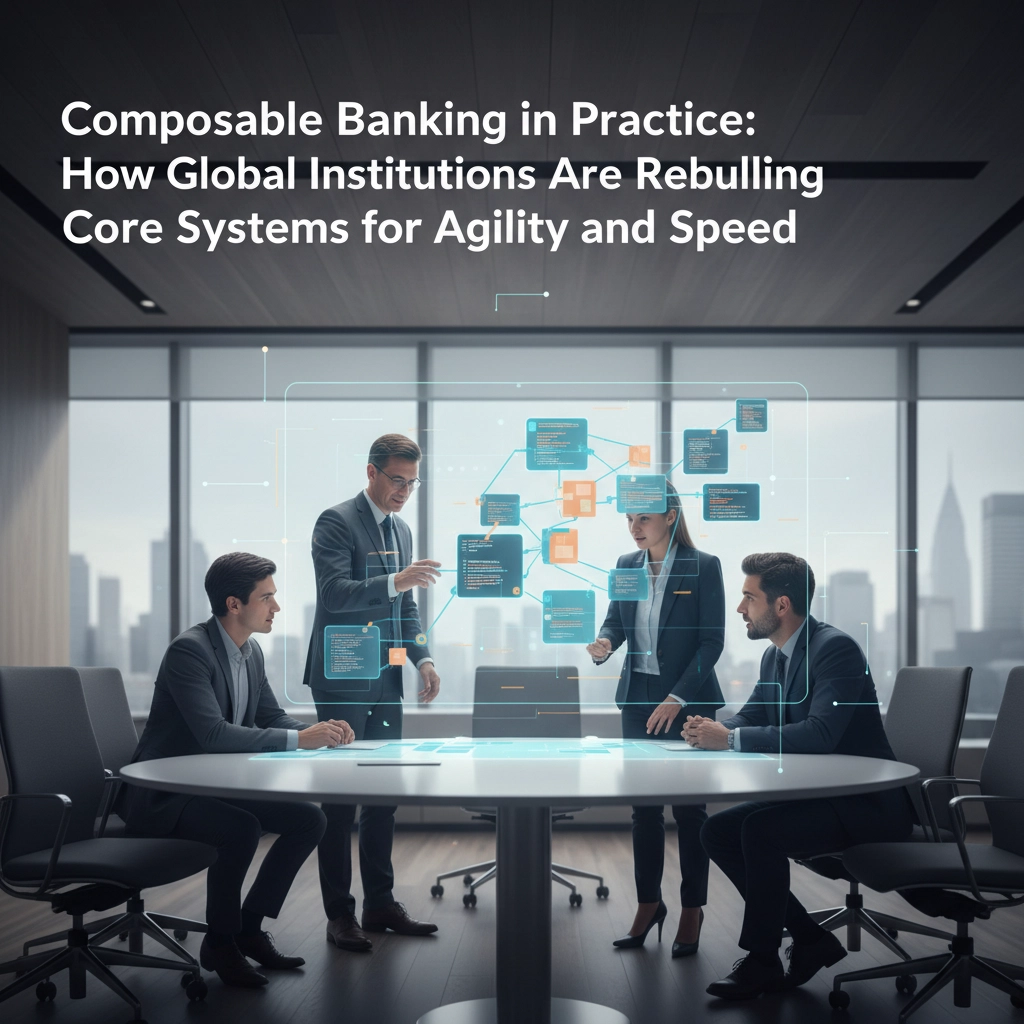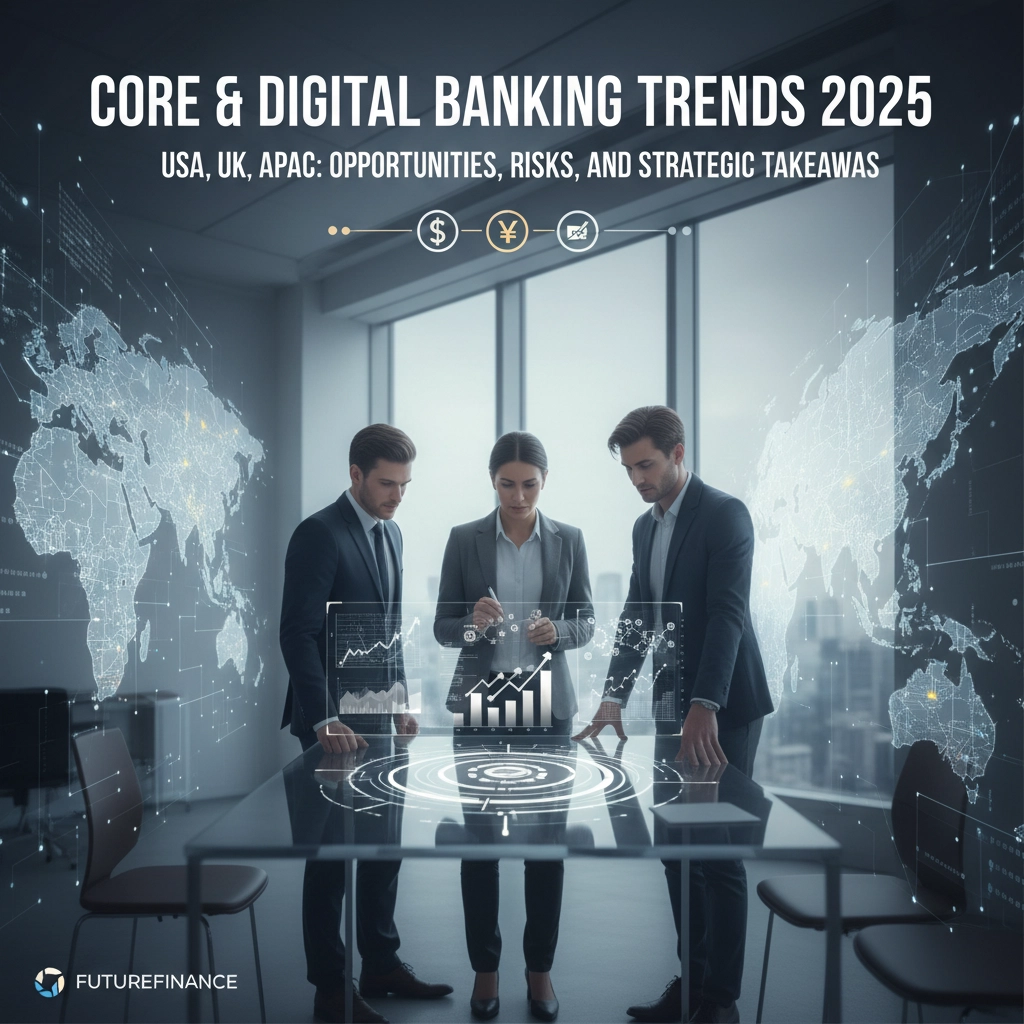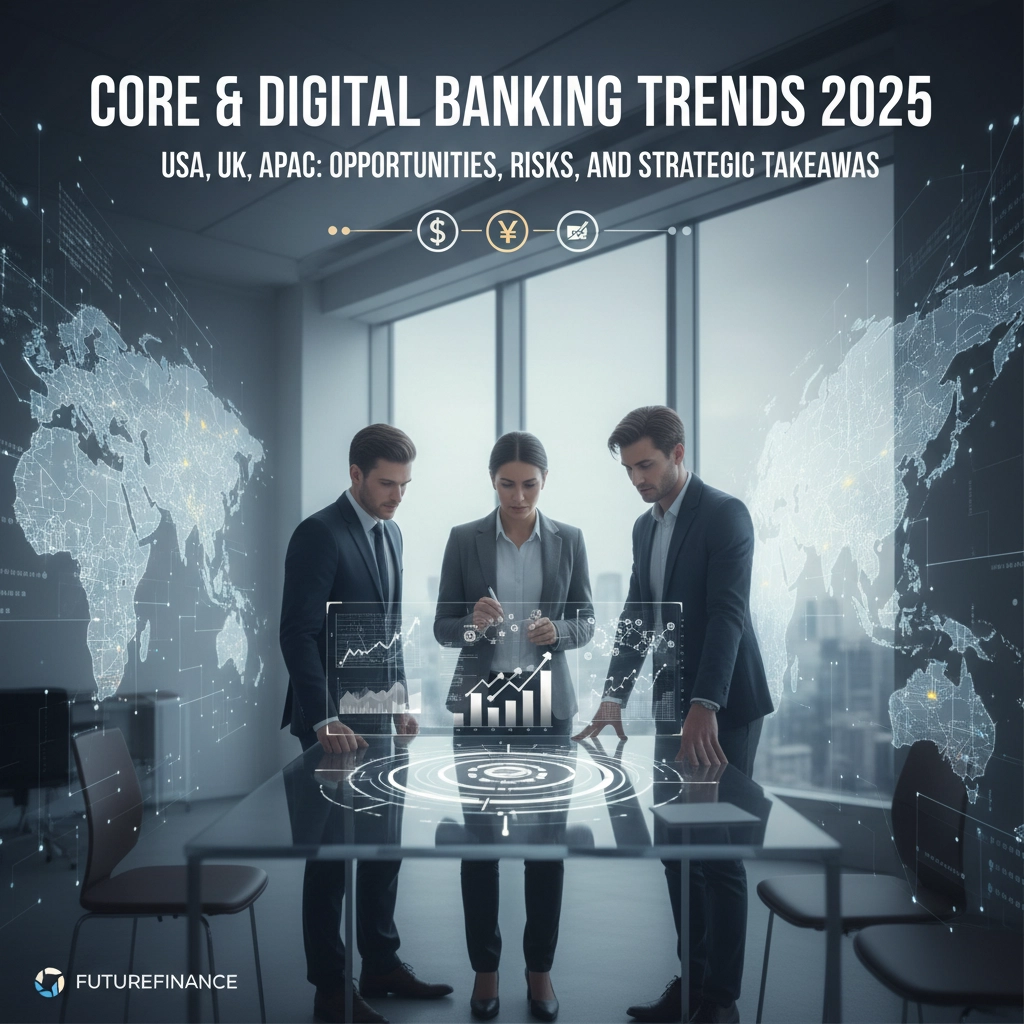Author: Penny Lane
Banks are no longer just financial institutions: they are becoming digital platforms. To maintain competitive advantage, they must fundamentally rethink how they build, connect, and evolve their systems. The answer lies in composable banking.
As financial services rapidly shift toward digital-first models, banks worldwide are confronting the limitations of traditional core systems. Rigid, monolithic architectures no longer meet customer demands for seamless, personalized, and real-time experiences.
Composable banking represents a modular approach that allows banks to build their tech stacks like interconnected components: flexible, scalable, and fast to deploy. This is not merely a technological trend: it is a strategic imperative for survival in the modern banking landscape.
This analysis examines how composable banking is being implemented by institutions across the USA, Europe, and APAC, the measurable benefits emerging, and actionable lessons for strategic implementation.
What Is Composable Banking?
Composable banking is a modern architectural model where financial services are built using interchangeable, modular components connected via APIs on cloud-native infrastructure.
Instead of being locked into single vendor or tech stack solutions, banks can:
- Assemble best-of-breed capabilities across multiple vendors
- Quickly integrate or remove services based on business needs
- Adapt rapidly to market and regulatory changes
- Scale individual components independently
This architectural approach enables institutions to innovate at the speed of customer expectations while maintaining operational stability and regulatory compliance.

Drivers Behind the Strategic Shift
Customer Expectations Are Redefining Standards
Modern customers expect the same real-time, personalized experiences from banks as they receive from leading technology platforms. Modular systems enable banks to iterate and personalize services faster, meeting these elevated expectations.
Open Banking and Regulatory Pressures
Regulations like PSD2, MiCA, and Open Banking mandates require secure, flexible API ecosystems. Composable architectures are purpose-built for this regulatory environment, providing the necessary infrastructure for compliance and innovation.
Competitive Threats from Fintech Disruptors
Neobanks and fintech companies launch new services in weeks using modular architecture. Incumbent institutions must match this agility or risk losing market relevance.
Operational Cost Pressures
Legacy infrastructure is expensive to maintain and difficult to scale. Composable platforms can reduce operating costs by 20-40% while enabling greater agility and improved uptime.
Global Implementation Case Studies
United States: Redefining Speed and Scale
A top-5 US bank recently overhauled its customer onboarding system using a composable model. By combining internal modules with third-party KYC, fraud prevention, and e-signature tools, onboarding time dropped from 5 days to less than 24 hours, achieving a 30% infrastructure cost reduction.
This transformation demonstrates the practical impact of modular architecture on both customer experience and operational efficiency.
Europe: Open Banking Ecosystem Strategy
A UK-based digital-only bank built entirely on composable infrastructure now integrates over 12 fintech partners, including carbon footprint trackers, budgeting tools, and cryptocurrency wallets. Their open ecosystem model helped them acquire half a million customers in under 12 months.
This case study illustrates how composable architecture enables rapid partnership integration and accelerated customer acquisition.
APAC: Born-Composable Virtual Banks
In Singapore and Hong Kong, newly licensed digital banks are implementing composable architecture from day one. These institutions build only the core ledger and orchestrate everything else: payments, loans, identity verification: via APIs. Launch timelines have been cut in half compared to traditional builds.
This approach demonstrates the strategic advantage of starting with composable architecture rather than retrofitting legacy systems.

Measurable Benefits Realized by Early Adopters
| Benefit | Measurable Impact |
|---|---|
| Time-to-Market | New product rollout in weeks, not months |
| Customer Experience | Improved personalization and speed across channels |
| Scalability | Elastic response to traffic spikes and growth |
| Partner Integration | Fintech services deployed via plug-and-play APIs |
| Cost Optimization | Infrastructure and development savings of 25-40% |
These metrics demonstrate the tangible business value of composable banking implementation.
Implementation Challenges and Strategic Solutions
Legacy System Integration
Older core systems often lack API access, creating integration barriers.
Solution: Implement orchestration layers and API gateways as bridges between legacy and modern systems.
Vendor Management Complexity
Multiple vendors can create operational chaos without proper governance.
Solution: Establish comprehensive integration frameworks and platform governance models early in the implementation process.
Data Consistency Challenges
Synchronizing real-time data across multiple modules presents technical complexity.
Solution: Deploy event-driven architecture and centralized data lakes for consistent data management.
Cybersecurity Considerations
Increased endpoints create additional security risks that require careful management.
Solution: Implement centralized API management, zero-trust architecture, and real-time monitoring systems.
Change Management Requirements
New architecture demands organizational culture shifts and updated skill sets.
Solution: Invest in agile training, DevOps capabilities, and cross-functional squad development.

Strategic Implementation Recommendations
Start Small, Scale Strategically
Begin with high-impact areas like digital onboarding or payments processing, then expand systematically across other business functions.
Choose Modules Carefully
Adopt best-of-breed tools with proven scalability and regulatory compliance capabilities.
Build Robust Integration Infrastructure
Use orchestration and middleware solutions to unify modular components effectively.
Prioritize API Governance
Strong documentation, versioning, and monitoring are essential for long-term success and scalability.
Measure Performance Continuously
Track key metrics including:
- Time-to-market reduction
- Customer satisfaction improvement
- Cost savings achievement
- Partner onboarding speed
Future of Composable Banking
Composable banking forms the backbone of future financial ecosystems through several emerging trends:
Banking-as-a-Platform (BaaP): Banks offer services via APIs to third parties, becoming monetized platforms rather than traditional service providers.
Embedded Finance: Retail, logistics, and healthcare platforms integrate banking services through modular APIs, expanding the reach of financial services.
AI-Driven Orchestration: Artificial intelligence will orchestrate modular banking services in real-time based on user behavior, location, and contextual data.
These developments position composable banking as the foundation for next-generation financial services delivery.
Strategic Implementation Support
Composable banking represents more than a technological upgrade: it constitutes a strategic transformation in how banks operate, partner, and innovate. Institutions that embrace this model are building the agility necessary to thrive in a fast-moving, customer-first, digitally-native future.
Successful implementation requires expertise in fintech partnerships, core banking modernization, and cloud-native development. Organizations need strategic guidance to operationalize composable banking securely, efficiently, and strategically.
Ready to transform your banking infrastructure? Partner with experts who understand the complexities of composable banking implementation and can guide your institution through successful digital transformation.
For strategic consultation on composable banking implementation, contact Tim Street, Commercial Director at Finative:
Transform your banking systems with proven expertise in digital banking architecture and implementation.
Contact Tim Street
Email: tim.street@finative.dev
UK: +44 (0)203 959 7423
US: +1 (315) 871 5720
Contact form: https://finative.dev/contact-us/




Leave a comment: